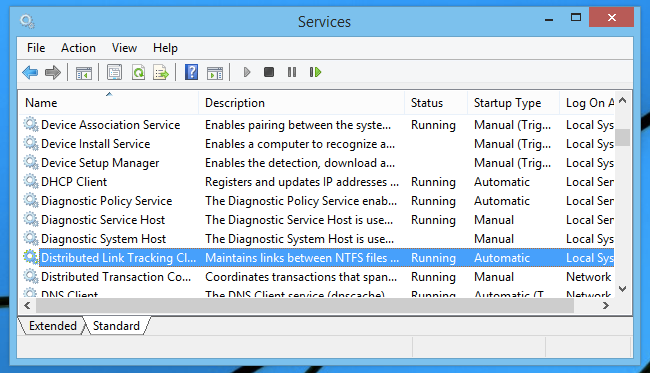

- Simple list of windows 10 services to disable how to#
- Simple list of windows 10 services to disable install#
- Simple list of windows 10 services to disable windows 7#
- Simple list of windows 10 services to disable download#
Open mmc.exe console and add the Security Templates snap-in.Ĭreate a new security template (New Template). Get-Service spooler | Add-AccessControlEntry -ServiceAccessRights Start,Stop -Principal corp\tuser Using Security Templates to Manage Service PermissionsĪ visual (but requiring more actions) graphical way to manage service permissions is using Security Templates. To allow non-admin user to start and stop spooler service, run the command: Get-Service spooler | Get-EffectiveAccess -Principal corp\tuser You can get the effective permissions for a specific Windows service from PowerShell like this:
Simple list of windows 10 services to disable install#
Install this module and import it into your PS session: This module also allows you to manage the service permissions.
Simple list of windows 10 services to disable download#
In TechNet gallery there is a separate unofficial PowerShell module for managing permissions for different Windows objects – PowerShellAccessControl Module (you can download it here). Setting Windows Service Permissions Using PowerShell After that select the permissions that you want to assign (Full Control/Write/Read). Open the process properties and click the Services tab.Ĭlick the Permissions button and add the user or group in the window that opens. In our example, this is spoolsv.exe (the spooler executable – C:\Windows\System32\spoolsv.exe). Run the Process Explorer as administrator and find the process of the service you need. You can change Windows service permissions using one more Sysinternals utility – Process Explorer.
Simple list of windows 10 services to disable how to#
How to Change Windows Service Permission Using Process Explorer?

Or you can find the SID for any domain user using the Get-ADUser cmdlet: To get the SID for the current user, you can use the command: Instead of a predefined group, you can explicitly specify a user or group by SID. The last 2 characters are the objects (user, group or SID) that are granted permissions. LC - SERVICE_QUERY_STATUS (service status polling) Windows Presentation Foundation Font Cache 3.0.0.CC - SERVICE_QUERY_CONFIG (request service settings) Logical Disk Manager Administrative Service ServiceName which should be used with ‘net’ and ‘sc config’ commands. The first column shows the display name of a service and the second column shows the service name that should be used in net start or net stop or sc config commands. These service names are listed below for each service.

So to start Remote procedure call service the command is: net start RpcSsTo stop Remote procedure call service net stop RpcSs But the service name we need to use in the above commands is RpcSs. For example, Remote procedure call (RPC) is the display name of the service. Each service is given a unique identification name which can be used with net or sc commands.

Note that the service name is not the display name of a service. Again, if you do not have administrator previliges you would get the below error.
Simple list of windows 10 services to disable windows 7#
This SC command works on a Windows 7 machine and also on the down-level editions of Windows i.e Windows XP/2003 and Windows Vista. Note: Space is mandatory after ‘=’ in the above sc commands. To make a service start automatically with system boot: sc config servicename start= auto To enable a service: sc config servicename start= demand To disable a service: sc config servicename start= disabled If you are just a normal user on the computer, you would get an error like below. You need to have administrator privileges to run net start/stop commands.


 0 kommentar(er)
0 kommentar(er)
